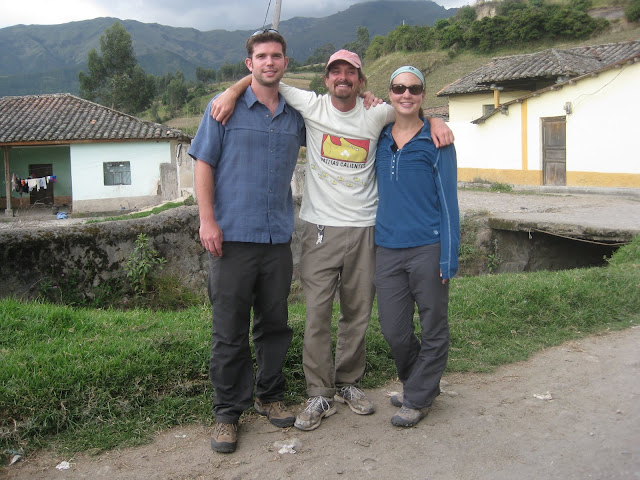 Ok, he´s not officially an Ecuadorian citizen yet, but that´s where his heart is. Meet Peter Shear, non-profit founder, father to two beautiful Ecuadorian girls, University of Michigan alumnus, and one of the most generous, genuine, and kind people I have ever met. Originally from Vermont, Peter has spent the better part of the past 14 years living in northern Ecuador, raising his family, and helping rural communities through his non-profit, the Inter-American Center for the Arts, Sustainability, and Action (CASA).
Ok, he´s not officially an Ecuadorian citizen yet, but that´s where his heart is. Meet Peter Shear, non-profit founder, father to two beautiful Ecuadorian girls, University of Michigan alumnus, and one of the most generous, genuine, and kind people I have ever met. Originally from Vermont, Peter has spent the better part of the past 14 years living in northern Ecuador, raising his family, and helping rural communities through his non-profit, the Inter-American Center for the Arts, Sustainability, and Action (CASA).
I first met Peter in Colorado in spring, 2008. Among his many different hats, Peter is the in-country director for a volunteer tour operator in Boulder, which brings him through town once a year. After hearing about the community development and tourism projects he´s been orchestrating in rural Ecuador, I knew a visit would be part of our RTW itinerary. It turned out to be way more than just a stop along the way.
Our first two weeks in Ecuador were spent under Peter´s wing, getting the behind-the-scenes stories about the successes and challenges of organizing a wide variety of community-driven economic projects. I was quite literally blown away by all he has accomplished. Have a look:
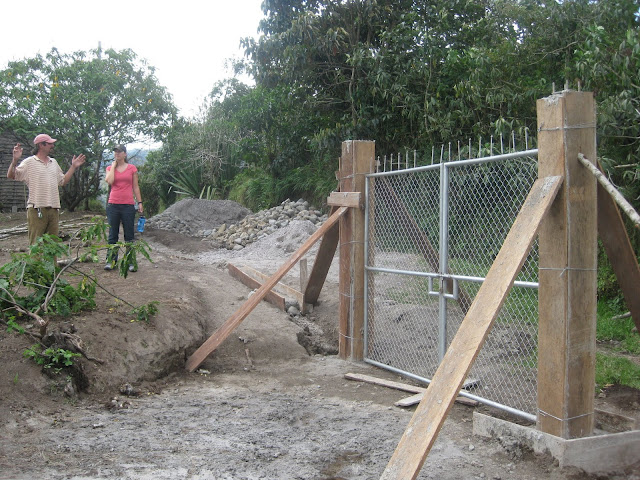 The Inter-American Center for the Arts, Sustainability, and Action is committed to helping rural communities realize sustainable economic development opportunities (or in non-jargon, helping poor people earn decent livings in ways that are good for their communities and regions). While CASA’s projects span a wide range of economic development initiatives, a core component is community-based and volunteer tourism. For over 7 years, CASA has been bringing groups of student and young-adult volunteers to the area, working side by side with the locals to build community projects and infrastructure that benefit the residents and the environment. Volunteers participate in “mingas”, organized project days where residents come together to work on a particular construction, farming, conservation, or other community-benefiting initiative. Funding for minga projects comes from local sources, as well as money raised by volunteers prior to their trips. To date, CASA volunteer tourism projects in a single community, Pucara, have included:
The Inter-American Center for the Arts, Sustainability, and Action is committed to helping rural communities realize sustainable economic development opportunities (or in non-jargon, helping poor people earn decent livings in ways that are good for their communities and regions). While CASA’s projects span a wide range of economic development initiatives, a core component is community-based and volunteer tourism. For over 7 years, CASA has been bringing groups of student and young-adult volunteers to the area, working side by side with the locals to build community projects and infrastructure that benefit the residents and the environment. Volunteers participate in “mingas”, organized project days where residents come together to work on a particular construction, farming, conservation, or other community-benefiting initiative. Funding for minga projects comes from local sources, as well as money raised by volunteers prior to their trips. To date, CASA volunteer tourism projects in a single community, Pucara, have included:
-
Building homes for residents in need (recipients of the homes were chosen by a community housing board that accepted applications and prioritized based on economic and social factors).
-
Construction of a community center for meetings, events, celebrations, weddings, etc. The center is the largest of its kind in all of the region, and has turned into a source of revenue for Pucara, as neighboring communities have begun renting it out. Proceeds from this program now pay for transportation for Pucara students to attend high school in the neighboring community of Apuela (prior to this program, most kids in Pucara did not attend high school due to the prohibitive transportation costs).
-
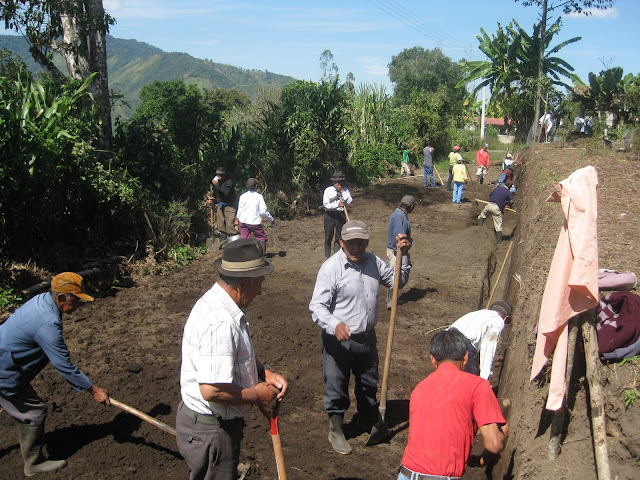 Purchase of land and construction of community organic gardens.
Purchase of land and construction of community organic gardens.
-
Purchase of land and construction of community farms. Some of the poorest residents in town have no land, and were in need of space for subsistence farming.
-
Construction of solar hot water showers for community use.
-
Construction of soccer field facilities.
-
Conservation through land purchasing, reforestation, and preservation.
-
Education through organic and agro-ecological farming instruction and testing.
This impressive list of projects, while organized and guided by Peter and CASA, was driven primarily by community initiation, participation, and democratic decision making. The result is a community with a much richer set of resources and infrastructure for creating new economic opportunities for local residents.
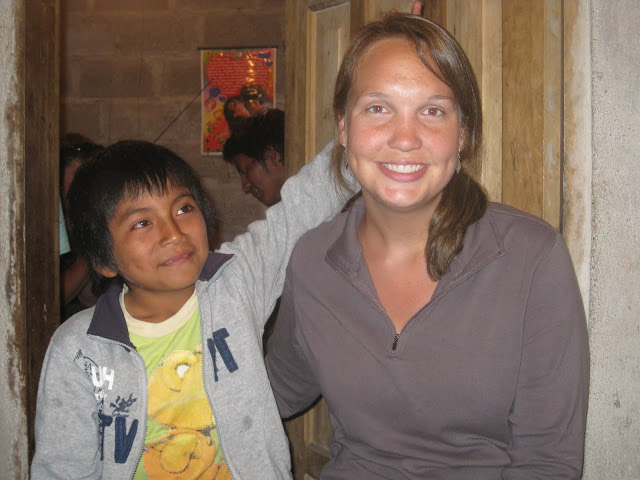 One of the most lucrative opportunities that has arisen from CASA’s work in Pucara is a well organized community-based tourism infrastructure, which we had the pleasure of participating in. While initially developed primarily for the volunteers, Pucara is now well equipped and actively receiving independent travelers interested in an authentic experience interacting with rural Ecuadorian families and communities. A rotating homestay program with 20 participating local families allows travelers the chance to live, eat, sleep, and participate in lives of the residents of Pucara for US$10 dollars per night (which includes 3 meals). The rotating nature of the program ensures an equal distribution to families throughout the community. The CASA-established Spanish school, the first of its kind in the region, allows travelers to hone their language skills while supporting local women teachers, all of which are government-certified. Of course, there are always volunteer opportunities available, independently or through community mingas.
One of the most lucrative opportunities that has arisen from CASA’s work in Pucara is a well organized community-based tourism infrastructure, which we had the pleasure of participating in. While initially developed primarily for the volunteers, Pucara is now well equipped and actively receiving independent travelers interested in an authentic experience interacting with rural Ecuadorian families and communities. A rotating homestay program with 20 participating local families allows travelers the chance to live, eat, sleep, and participate in lives of the residents of Pucara for US$10 dollars per night (which includes 3 meals). The rotating nature of the program ensures an equal distribution to families throughout the community. The CASA-established Spanish school, the first of its kind in the region, allows travelers to hone their language skills while supporting local women teachers, all of which are government-certified. Of course, there are always volunteer opportunities available, independently or through community mingas.
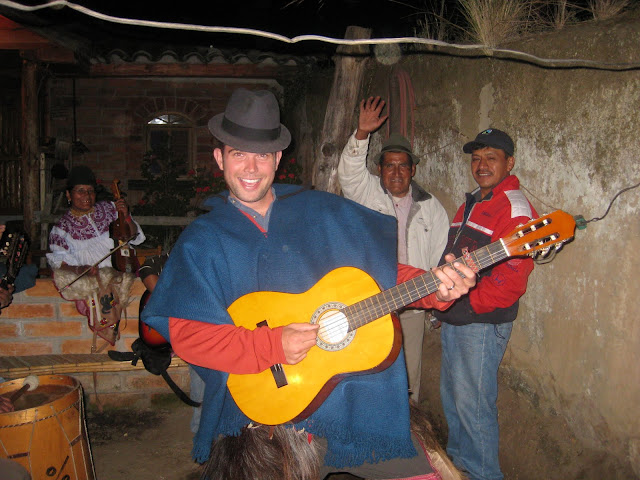 Impressive, right? What’s more impressive is that Pucara is only one of 5 communities across the northern Andes that Peter is working with, and each has its own set of projects, resources, accomplishments, challenges, and approach to community tourism (we were able to visit 4 of these communities with Peter).
Impressive, right? What’s more impressive is that Pucara is only one of 5 communities across the northern Andes that Peter is working with, and each has its own set of projects, resources, accomplishments, challenges, and approach to community tourism (we were able to visit 4 of these communities with Peter).
Peter is very humble about the achievements of CASA, and while he´s pleased with the progress of the communities, in his mind they´ve just begun. The list of potential projects grows weekly, and there are always bumps in the road to smooth out. But Peter is excited about what the future holds. The grand vision is to connect his work in each community through a multi-day community-to-community trek (think of Peru’s Inca Trail leading to Machu Picchu, only instead of camping near ruins, trekkers will stay with families in CASA communities along the route). Starting atop a glaciated volcano near the community of La Chimba, the 12 day trek will lead visitors through native forests, along active volcanoes and around alpine lakes, through the famous market town of Otavalo, and then descend into the cloud forest before culminating at a set of hot springs near Pucara. The Inti Chakinan Trail (or Sun Trail, in the local Kichwa language), as they’ve named it, will be hosting its first through-hiking guests this January. Want to go? I do.
It’s now been well over a month since our time with Peter in northern Ecuador, and one of the most significant lasting impressions is the motivation behind his dedication – the well-being of the people of the CASA communities. Peter’s work is selfless, genuine, and fully engaged with the people in these pueblos. Peter is no longer an outsider, a gringo, to the people of Pucara, Morochos, Peribuela, Pijal and La Chimba. He is an accepted, trusted, and appreciated member of their community. And when you’re visiting rural communities in a foreign culture, there’s nothing like a local to show you around.
One of our favorite days of the trip so far was a Saturday outing to Cieneguilla with Ryan, Anglela and the fam. Cieneguilla is not far outside the city limits of Lima and feels a world away. Less than and hour drive from Ryan and Angela’s home, it is a popular spot for those wishing to escape the hustle and bustle of the city. Where Lima is normally smoggy and overcast, in Cieneguilla you can breathe clean air and see the blue sky. We went to cool spot called La Mesa de Piedra that is part restaurant, part park, part entertainment. We played around outside – swinging, playing lacrosse, soccer, and frisbee, rock climbing, and trying to catch minnows – and built up an appetite before sitting down for lunch. There is only outdoor seating and the place was huge! There were dozens of other families doing the exact same thing, and there was a lively band playing along with traditional dancers throughout several of the numbers. It was quite an experience and very entertaining!
For our lunch, Ryan and Angela ordered us a traditional Peruvian dish that combines several different types of meat (chicken, pork, beef) with a variety of vegetables (corn, beans, potatoes) in a big clay pot where it is then cooked underground. It comes out about a half-hour later and is enough to feed a pretty big group! It felt like we ate for hours and when we finally checked our watches, it was indeed late into the afternoon.
Ryan and Angela picked a seafood spot that had come highly recommended to them but that they hadn’t yet visited. We were spoiled rotten by the deliciousness of the meal and had a great time hanging out with Ryan and Angela.
 Among a few different hats that I’m wearing on the road (representative of
Among a few different hats that I’m wearing on the road (representative of